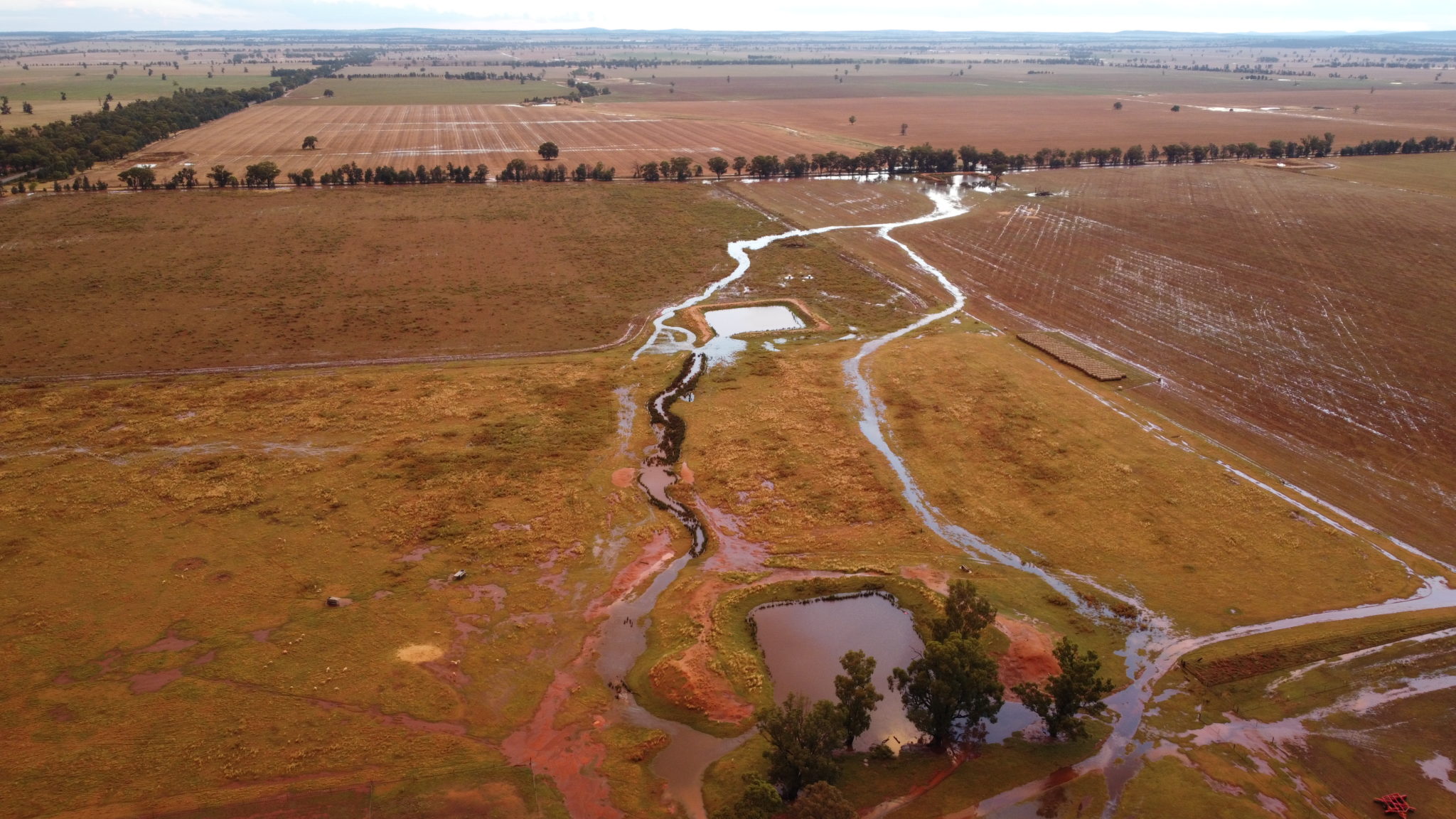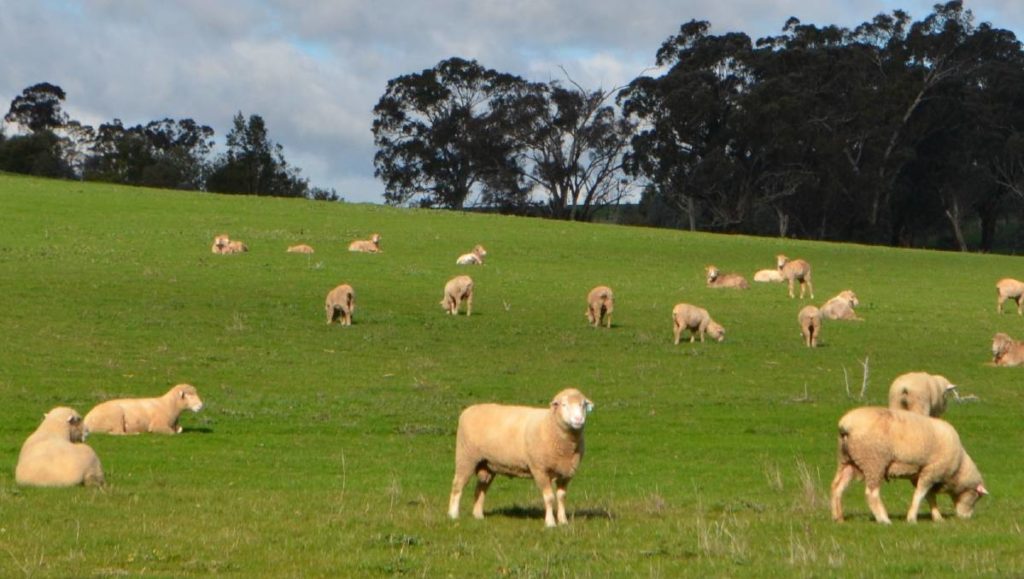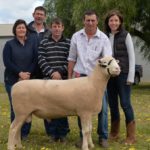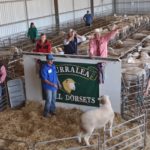“At Kurralea, we buy from the highest grade rams available after the auction & we always get a good selection of rams to choose from whether we want six or 12 replacement rams” – James Baldry.
James Baldry has purchased his replacement sires from Ben & Lucy Prentice’s Kurralea stud, Ariah Park, for the past six years, citing the evenness of the rams offered for selection is a prime reason for his confidence in the genetic performance of the stud.
“I opted for Poll Dorsets for their market acceptance giving us greater marketing opportunities & increasing our returns,” Mr Baldry said.
“One of the benefits of Kurralea is the obvious genetic depth within the stud which assures consistency of performance & robustness of rams giving us even lines of marketable lambs that can be sold in the 18 to 28 kilogram carcase weight range,” Mr Baldry said.
“I want to maximise our productive capacity & turning off as many lambs as possible from our breeding ewes allows us to achieve our potential.
“At Kurralea, we buy from the highest grade rams available after the auction & we always get a good selection of rams to choose from whether we want six or 12 replacement rams.”
Mr Brady joins 3700 CentrePlus-blood Merino ewes on the 1570 hectare property he manages in partnership with his wife Emma, which complement a 600 to 700ha cropping program and opportunity steer finishing.
Up to 1500 of the younger Merino ewes are joined to Dohne rams in a self-replacing flock allowing the older ewes to be joined to Poll Dorsets to turn off prime lambs for domestic & export markets..
“I had previously used White Suffolk rams, but opted for Poll Dorsets for their market acceptance giving us greater marketing opportunities & increasing our returns,” Mr Baldry said.
“We are able to sell off about a third of lambs at four to six months weighing 20 to 22kg dressed for the domestic trade & the balance are taken through to export weights.”
Mr Baldry said he was able to finish the export lambs on grazing crops, & if the season permits liked to get dual-purpose canola sown early because of the tremendous weight gains the lambs could achieve as they graze the crop for a longer period.
“The use of grazing crops such as Wylah wheat & dual-purpose canola has given us some flexibility in our management & are real ‘game changers’ in our operation,” he said.
“We can sow the canola earlier than the wheat & then carry our lambs through to export weights with some confidence.”
Mr Baldry said his ewes were plain bodied and inherently fertile, having had great selection pressure applied for a long time.
“We are averaging 125 per cent at lamb marking from unscanned ewes,” he said.
“Our maiden ewes are scanned, with any not in lamb given a second chance, after which dry ewes are sold, so we have a highly fertile flock.”
When selecting his replacement sires, Mr Baldry said he considered structure & conformation of each potential sire, but makes the final decision based upon the rams figures.
Mr Baldry looks for rams that have been born a twin with good EBV’s for post-weaning weight & average to lower birthweight.
“They are the indices I look at, & I visually assess the rams for smoothness from head through to their shoulders,” he said.
“I like them to be narrow through the shoulders for ease of lambing, but also with a good rump & wide between their hind legs, good length & depth and acceptable fat cover.
“I don’t want to raise a lamb that is over fat.”
Having a ram with good length & depth not only ensures greater feed conversion efficiency, but ensures a condition score of 2 to 3 on the lambs Mr Baldry produces.
“We can take lambs through to heavy weights of 26 to 27kg & still only have a condition score of 2 to 3, which is a real bonus,” he said.
Another feature of the rams Ben Prentice offers for sale, according to Mr Baldry, are their maturity at sale time.
“The rams are not sold until they are 18 months of age which is an advantage because it allows for greater visual selection pressure,” Mr Baldry said.
“They are also sexually mature and much more robust when joined at 1.3 to 1.4 per cent.”
Mr Baldry joins his ewes to commence lambing from the last week of July and continues until the end of August.
“We get our best conception rates when we join in late March with the decreasing daylight hours the ewes increase their rate of ovulation,” he said.
“Having a late winter lambing gives the ewes more opportunity to raise their lambs successfully with the increased pasture growth by the time their lambs are old enough to eat.
“It also means our ewes maintain their body condition without the need for supplementary feeding, meaning they will have sufficient weight to successfully rejoin.”
Mr Baldry noted with interest the convenience of the local meat processing facility in Cootamundra with its access to Asian and North American markets.
“A marketing opportunity has opened up for our export lambs through the Manildra Meat Works in Cootamundra,” he said.
“It is a new avenue for our lambs and it does give us confidence to continue investing in quality genetics from Kurralea to increase the quality of our prime lambs.”
Mr Baldry is also quietly confident with current seasonal conditions noting soil moisture levels are in his favor for an outstanding spring with terrific pasture and crop growth.
Courtesy of Stephen Burns, THE LAND




